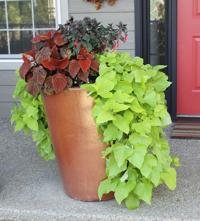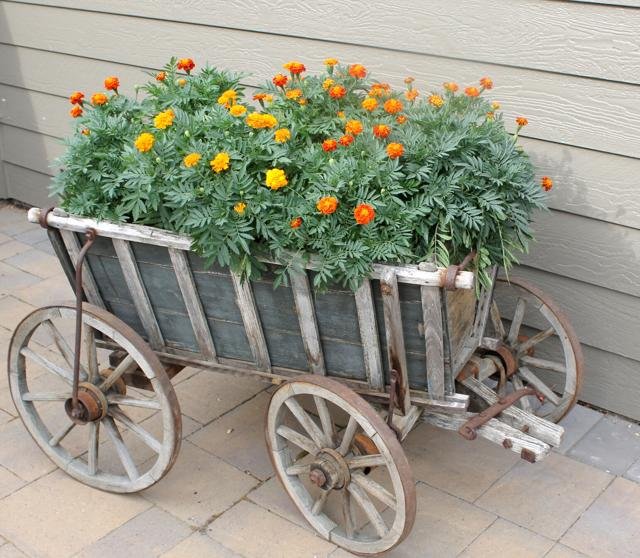Tips for successfully growing annuals in containersTemplate Bonnie Orr
By Bonnie Orr
WSU Chelan/Douglas County Master Gardener



Gardening magazines are filled with pictures of lush containers lining a walkway or along the sides of a deck. Containers are lovely and a great gardening option for people who do not have gardening space or who have limited mobility.
In North Central Washington, containers are a great way to grow annuals. If you have storage space in a garage or in a heated shed and lots of muscle power, containers filled with perennials can persist for many years. Selecting lighter-weight containers will allow you to re-arrange pots more easily. Ceramic-coated clay containers are heavy and prone to frost break if left uncovered outside. Selecting containers with wheels will allow you to appropriately site containers.
Our region’s weather creates challenges for plants grown in containers. The wind can break stems. We have wind about every five days pretty much for the entire growing season. Gardening magazines often feature standard roses in containers. These are roses grown as miniature trees. They are not an option for NCW because of the wind. In addition, the pot must be moved to a warm spot for the winter to prevent the roots from freezing.
More serious is the heat. Have you put your hand on the side of the large container when the sun has been shining on it for several hours? Pots get hot and the heat stresses the roots. It is difficult to find the happy-medium for watering the plants: too much water rots the roots; too little water causes the plants to wilt.
Many people who grow tomatoes in containers grow tomatoes that suffer from blossom-end rot — that yucky-looking black bottom. Cherry tomatoes do not suffer as much, but standard tomato plants cannot get enough water from the roots. When you clean out the container at the end of the season, aren’t you amazed at the huge root mass the tomato plant grew?
Light is another limiting factor to container gardening. Plants that require full sun need at least six hours of direct sunlight on the container — not just light, but full sun — otherwise these plants will grow wimpy and straggling and be more likely to attract insect pests. On the other hand, there are many shade-loving plants to fill containers.
Daily observation of containers plants will allow the gardener to deal with insect pests such as aphids or petunia bud worms or scale before the entire plant has been weakened by the pests. It is easy to rub away those first few insects.
Do you have to refill your container each season with new soilless potting mix? Absolutely not. It is too much work! During the previous growing season, the potting mix could have lost some of its nutrients, but if you are fertilizing the annuals biweekly, there are plenty of nutrients remaining in the soil. Sometimes the soil gets compacted from the weight of the water falling on the surface of the soil. If so, just stir it around and fluff it up and plant for the new season.
Enjoy the beautiful flower garden created by the annuals growing in containers.
A WSU Chelan and Douglas County Master Gardener column appears weekly in The Wenatchee World. Bonnie Orr is one of four regular columnists featured. To learn more, visit bit.ly/MGchelandouglas or call (509) 667-6540.
